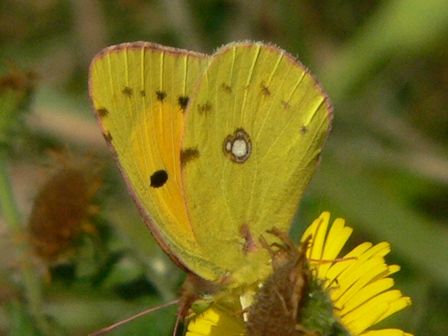

Teams of volunteers are helping clear natural habitats, making them more attractive for island wildlife, which is in turn monitored by volunteers.
Up to 40 people take part in habitat management work, in areas such as Noirmont, Portelet, Gorselands and Ouaisne, which are all designated sites of special interest.
A similar number of volunteers are involved in monitoring sites in conjunction with the Department of the Environment to check how well local wildlife is doing.
Butterfly levels are a good indicator of environmental health as they need a range of plants and habitats to feed and breed. Since Jersey began monitoring butterfly levels in 2004, volunteers have walked over 4,000 miles, following set routes each week throughout the summer, and have counted over 130,000 butterflies.
Dr Paul Chambers, Natural Environment Officer, said: “The volunteers have a considerable impact on the volume of work the department can do. They are generally people who have knowledge about the environment and about different species and they help us in different ways. Some of the volunteers help restore natural habitats, getting them into a better condition for wildlife; while others help with the monitoring programmes.
“Our monitoring programme for butterflies is obligatory under one of Jersey’s multilateral agreements for measuring the health of the environment. The butterflies are doing particularly well on the sites monitored by the volunteers.”
Butterflies such as the Grayling and Green Hairstreak, which live in semi-natural sites such as those tended by volunteers, have done particularly well, with their numbers increasing by 458% and 48% from 2004-2013.
Butterfly monitor volunteers meet weekly from April-September, while conservation volunteers also meet monthly during the winter.
73% of volunteer labour comes thorough Community Services, which contributed 2375 hours to the Environment Department in 2015 – the equivalent of employing a full-time member of staff for 18 months. The remaining 16% of volunteers include school groups and corporate organisations.
Dr Chambers said: “Most of the volunteers get involved because they are passionate about wildlife and the countryside. The conservation volunteers end up working together as a team so there is a good community spirit. People get to use their practical skills and work on sites they would not normally have access to. The butterfly volunteers are passionate about wildlife and are knowledgeable about butterflies. We can always use more volunteers so if anyone is interested they should get in touch.”
Comments
Comments on this story express the views of the commentator only, not Bailiwick Publishing. We are unable to guarantee the accuracy of any of those comments.